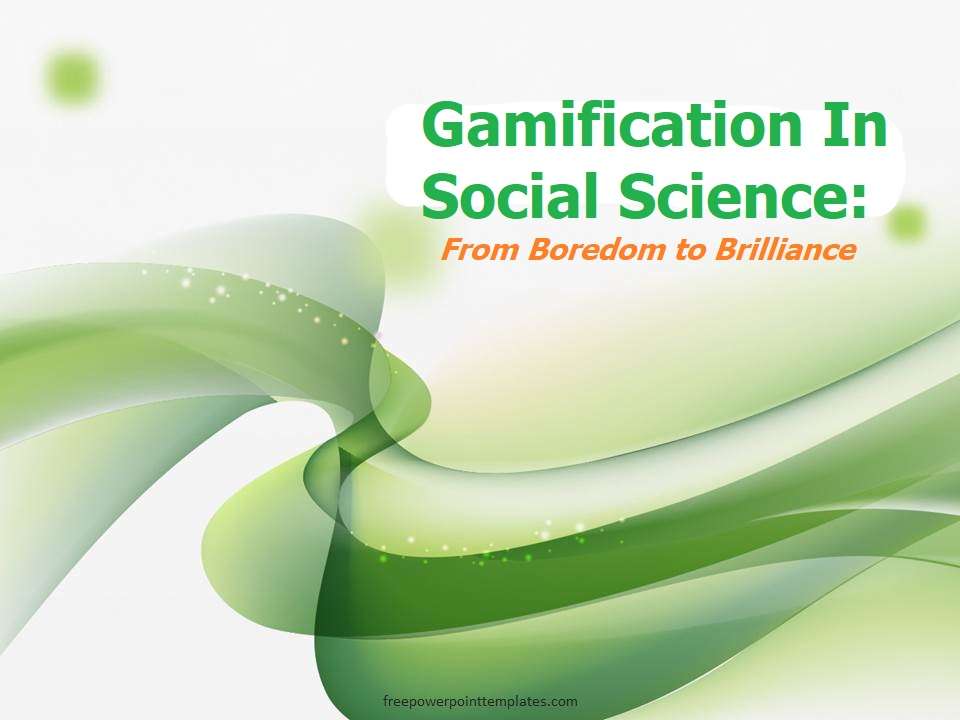Exploring Gamification In social-science
Gamification in social science involves integrating game elements and mechanics into the learning process to make it more engaging and interactive. With gamification, you can capture students’ interest and encourage them to actively participate in their own learning by combining challenges. Your students will explore social science subject in a useful and fun way through interactive simulations, group projects, and gamified exams. In this article, we will explore the concept of gamification in social science education and how Edu puzzle websites can transform the learning experience
Introduction
Social science is a fascinating field of study that delves into the complexities of human behavior, societies, and their interactions.
However, for many students, the subject can sometimes be perceived as dull and unengaging.
Traditional teaching methods often fail to captivate students’ interest.
This leads to disconnect them from the rich knowledge and insights that social science has to offer.
But, there is a good news for all social science teachers.
fortunately, the emergence of Edu-puzzle websites has opened up new avenues for making social science not only educational but also fun and
interactive.
Now, you can transform how students think about and interact with social science by investigating gamification, which will ultimately improve students’
comprehension and memory of critical ideas.
The Power of Gamification
Toda, Gamification has gained significant attention in various fields, including education.
Therefore, just use game-like features, such as challenges, rewards, and competition in your class.
Believe me you will create a more engaging and immersive environment for students.
Gamification will enhance motivation, increase active participation, and improve retention of information.
So, if you apply to social science education, you can revolutionize the way students perceive and understand the subject matter.
Edu Puzzle Websites: A Gamified Approach to Social Science
- Edu puzzle websites provide a perfect platform to implement gamification in social science education.
- These websites offer a wide range of interactive puzzles, quizzes, and games tailored to specific social science topics.
- Let’s explore some of the ways in which these platforms can make the study of social science more enjoyable and effective:
Interactive Simulations:
- Edu puzzle websites often feature simulations that allow students to step into the shoes of historians, economists, or sociologists.
- Through virtual scenarios, students can experience historical events, economic decision-making processes, or social dilemmas firsthand.
- These interactive simulations provide a dynamic learning experience, fostering critical thinking and analytical skills.
Collaborative Challenges
- Many Edu puzzle websites offer collaborative challenges where students can work together in teams to solve complex social science problems.
- By encouraging teamwork and cooperation, these challenges promote communication and foster a sense of camaraderie among students.
- The element of competition adds an exciting twist, motivating students to actively participate and strive for success.
Gamified Quizzes and Assessments
- Traditional quizzes and assessments can be transformed into engaging activities through gamification.
- Edu puzzle websites often present quizzes in a game-like format, incorporating timers, leaderboards, and rewards.
- This not only makes the assessment process more enjoyable but also encourages students to review and reinforce their understanding of social science concepts.
Story-Based Adventures
- Storytelling is a powerful tool for engaging students.
- Edu puzzle websites can present social science topics in the form of captivating stories or adventures, where students navigate through different challenges and puzzles to progress.
- By immersing students in an interactive narrative, these platforms make learning social science a thrilling experience, enabling students to connect with the subject on a deeper level.
Personalized Learning Paths
- Edu puzzle websites can adapt to individual students’ learning needs and pace.
- Through personalized learning paths, these platforms can identify areas where students need additional support and provide tailored activities and resources to address those gaps.
- This customized approach ensures that students receive targeted assistance while maintaining a sense of autonomy and progress.
Competition and Collaboration
- Gamification introduces an element of healthy competition among students.
- Leaderboards, badges, and rewards create a sense of achievement and encourage students to strive for excellence.
- Furthermore, Edu puzzle platforms offer collaborative features, enabling students to work together on group projects, debates, and problem-solving tasks.
- This collaborative spirit enhances teamwork, communication skills, and social interaction within the classroom.
Immediate Feedback
- Gamification allows for instant feedback, enabling students to assess their progress in real-time.
- Edu puzzle websites often provide immediate responses to students’ answers and offer explanations for incorrect choices.
- This prompt feedback helps students identify areas of improvement and reinforce their understanding of social science concepts.
Three examples of gamification in History
Gamification, the application of game elements and mechanics to non-game contexts, can be an innovative approach to make historical topics more
engaging and interactive. Here are three examples of gamification in history:
1. Historical Role-Playing Games (RPGs)
- Role Playing Games are a popular genre in video games where players assume the roles of characters in fictional settings.
- In history, games like “Assassin’s Creed” series and “Total War” series incorporate historical accuracy while providing players with an immersive experience.
2. Interactive Museum Exhibits
- Museums have embraced gamification techniques to enhance visitor engagement and understanding of historical artifacts.
- Interactive exhibits utilize technologies like touch screens, augmented reality (AR), and virtual reality (VR) to create interactive experiences.
- In this game, students can use touchscreens to solve historical puzzles, play virtual archaeological digs, or participate in historical simulations, bringing history to life and making it more accessible to a wider audience.
3. Historical Strategy Board Games
- Next, are the Board games.
- They have long been used as educational tools.
- Many historical strategy board games provide an immersive learning experience.
- Games like “Axis & Allies,” “Risk,” and “Twilight Struggle” allow players to recreate historical conflicts, make strategic decisions, and learn about the geopolitical dynamics of different eras.
These games often include maps, miniature figures, and cards representing historical events, requiring players to understand historical context to succeed. These examples demonstrate how gamification can effectively engage individuals in historical topics, making learning enjoyable, interactive, and memorable. These games often feature detailed historical landscapes, characters, and events, allowing players to explore different time periods and engage in historical quests and battles.
Three examples of gamification in Geography
1. Geographical Trivia Apps
- There are various mobile apps and online platforms that gamify geography through trivia quizzes.
- These apps present players with questions about countries, capitals, landmarks, flags, and other geographical facts.
- Players can compete with friends or strangers, earn points, and unlock achievements as they test their geographical knowledge.
- These trivia games not only entertain but also help players learn and retain information about different places around the world.
2. Geocaching
- Next is Geocaching.
- It is a real-world treasure hunting game that combines technology with outdoor exploration.
- In this, participants use GPS-enabled devices, such as smartphones or handheld GPS devices, to navigate to specific coordinates and find hidden containers called geocaches.
- Geocaches can be found in various locations worldwide, and players can search for them individually or in teams.
- This game not only encourages players to explore their surroundings but also provides opportunities to learn about different geographical features and landmarks.
3. Geography-Based Strategy Games
- Next are the Geography Strategy games.
- These games incorporate geography as a core element, offering an engaging way to learn about the world.
- Examples include games like “Catan,” where players build settlements and trade resources on a hexagonal game board representing different terrains, or “Ticket to Ride,” where players compete to build railway networks connecting various cities around the globe.
- These games require players to consider geographical factors, such as proximity, transportation routes, and regional characteristics, as they make strategic decisions, providing an educational and enjoyable experience.
- By gamifying geography, these examples make the subject more interactive, fun, and accessible.
- They encourage players to explore, learn about different regions, and develop a deeper understanding of the world’s diverse landscapes and cultures.
Benefits of Gamifying Social Science Education
The gamification of social science education through Edu puzzle websites offers numerous benefits.
Increased Engagement
- Gamification captures students’ attention and motivates them to actively participate in the learning process.
- By transforming social science into an interactive experience, students become more engaged and invested in their own learning.
Improved Retention
- The use of gamified elements, such as challenges and rewards, enhances students’ memory retention and recall of social science concepts.
- The interactive nature of puzzles, Gamification & Edu Puzzle Websites Can Transform Social Science Learning?
Edu Puzzle Websites: Enhancing Learning through Interactivity
Edu puzzle websites are online platforms that provide a wide range of interactive puzzles, quizzes, and games designed specifically for educational
purposes. When integrated into social science learning, these platforms offer several benefits:
Engaging Learning Materials
- Edu puzzle websites offer a plethora of captivating learning materials, including crossword puzzles, word searches, quizzes, and interactive presentations.
- These resources make learning social science enjoyable and accessible to students with different learning preferences.
Reinforcement of Concepts
- Interactive puzzles and quizzes help reinforce social science concepts covered in class.
- By engaging in these activities, students actively review and consolidate their understanding of key theories, historical events, and societal structures.
Application of Knowledge
- Edu puzzle platforms provide opportunities for students to apply their knowledge in practical scenarios.
- Interactive simulations and case studies allow students to analyze complex social issues and make informed decisions, deepening their understanding of real-world implications.
Flexibility and Accessibility
- Edu puzzle websites offer flexibility in terms of access to learning materials and scheduling.
- Students can access these resources anytime, anywhere, allowing for self-paced learning and revision.
Conclusion
Gamification, coupled with the integration of Edu-puzzle websites, has the potential to transform social science education. By introducing game-like elements, personalized learning paths, interactive activities, and immediate feedback, gamification engages students in a more meaningful and enjoyable learning experience. Edu puzzle platforms. Social science education plays a crucial role in helping students understand the complexities of human behavior, societies, and the world around them.
However, traditional teaching methods often struggle to fully engage students, resulting in a lack of interest and limited retention of knowledge. Gamification, coupled with the integration of edu puzzle websites, has emerged as an innovative approach to transforming social science learning.





0 Comments